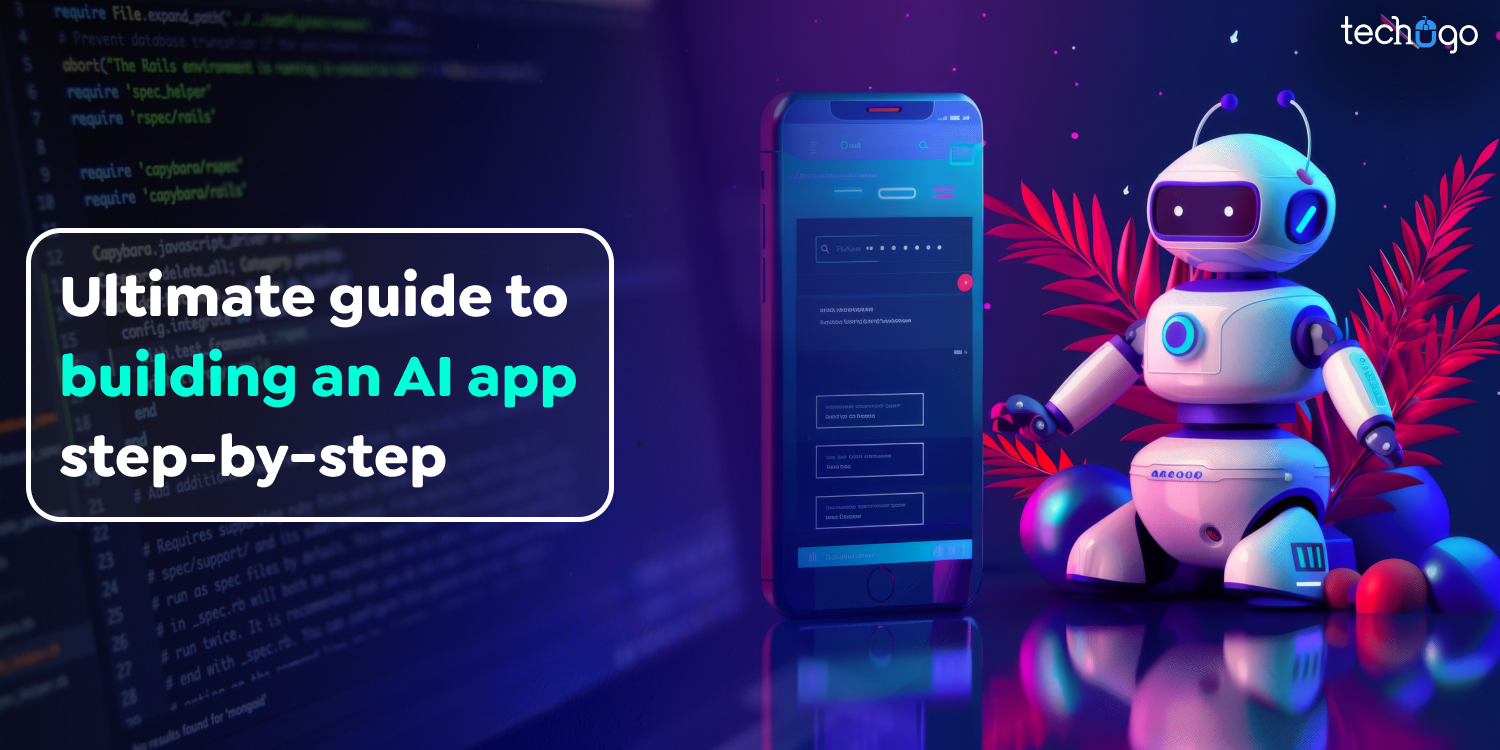20 May 2024
Updated on July 8th, 2024
How To Build An E-Learning App With The Latest Features And How Much It Costs?
Matthew Connor
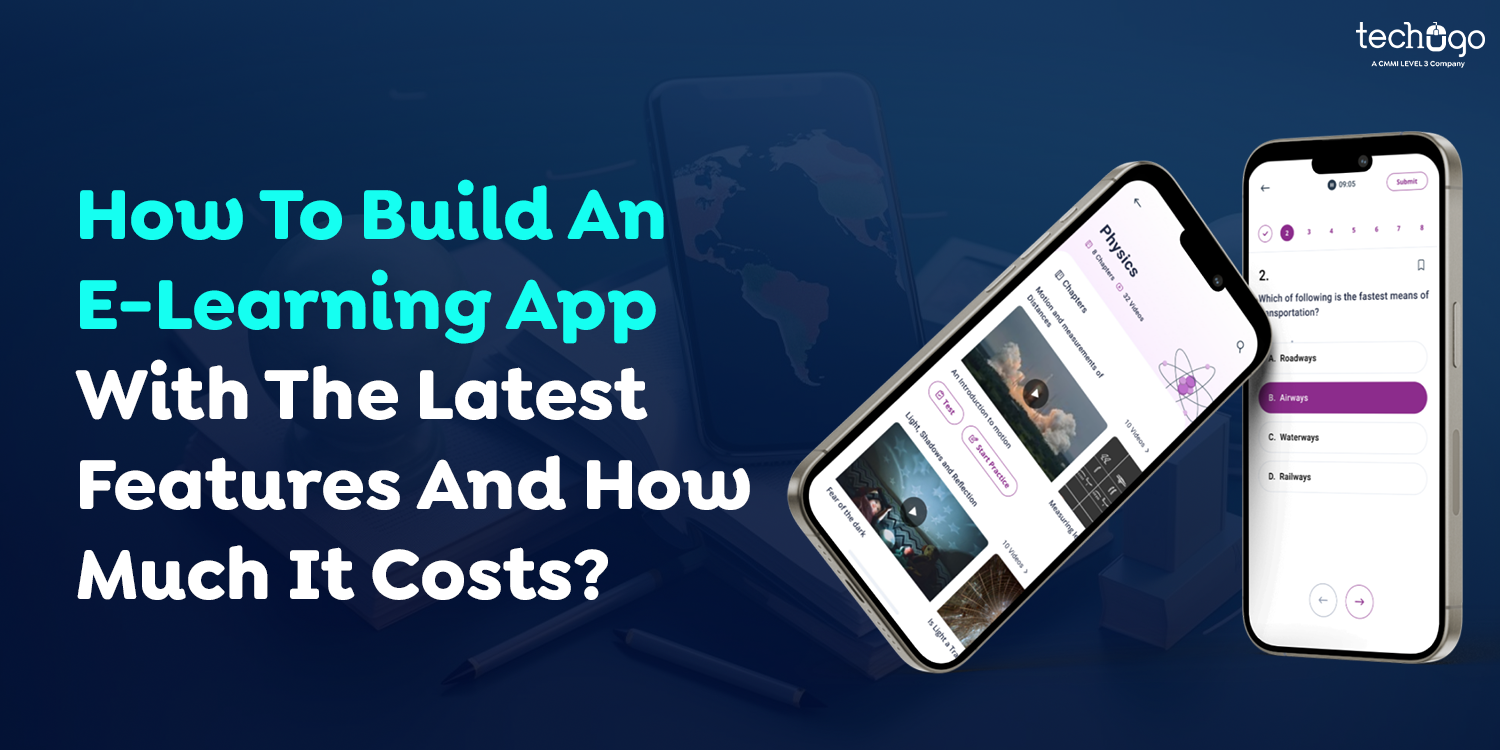
Imagine a world where learning knows no bounds, where knowledge is accessible anytime, anywhere. That is what the e-Learning app’s ability is. Learning is an essential journey, and an e-learning app development company is dedicated to making more efficient and innovative apps with the latest technologies and must-have features.
From its benefits to cost, our team of developers navigates every step of the process, ensuring that your aim turns out exactly as you dreamt it to. Whether you have ideas to change learning in the classroom globally or develop personal learning experiences that help students master their concepts, education app development helps you and turns your ideas into practical solutions.
So, are you ready to shape the future of education? Join us on this exciting journey, and let’s build the next generation of e-learning apps together!
Understanding the E-learning Ecosystem
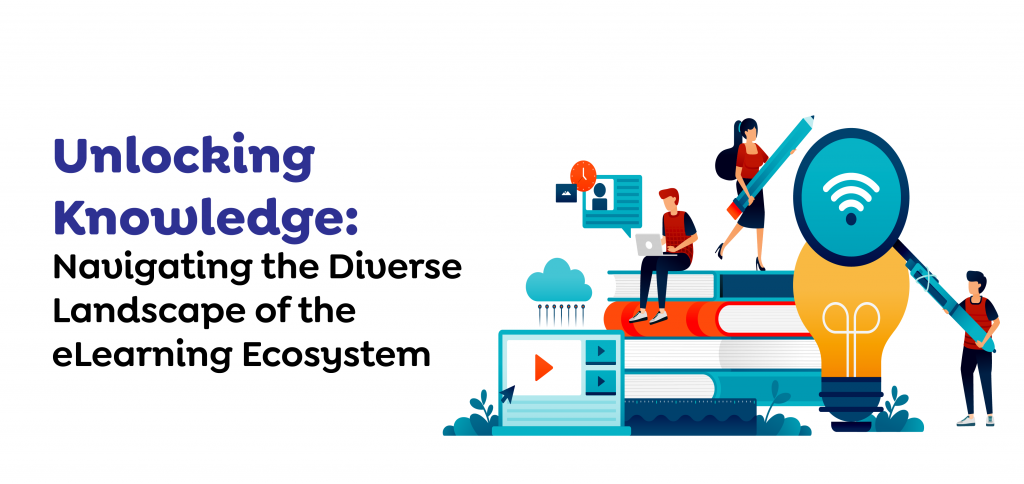
But first, we have to understand the general context of e-learning, which will bring us deeper into e-learning app development. Technology-based learning includes several e-learning tools and platforms crafted to support e-learning. This spectrum stretches from the most popular apps that can run on smartphones and web-based learning portals to virtual classrooms and the different varieties of Massive Open Online Courses (MOOCs). An e-learning app development company in Canada is the key to creating apps with the latest technologies.
The Rise of E-learning Apps
The high growth potential of e-learning applications in virtual education makes them the key engine. Contrary to traditional classroom setups, e-learning apps grant learners access to educational content anytime. This openness of education opened up new doors, ignoring location and granting opportunities to the young and the old. That’s why many enterprises are taking help from an e-learning app development company in Canada to fulfil client’s requirements.
Exploring the Benefits of E-learning Applications
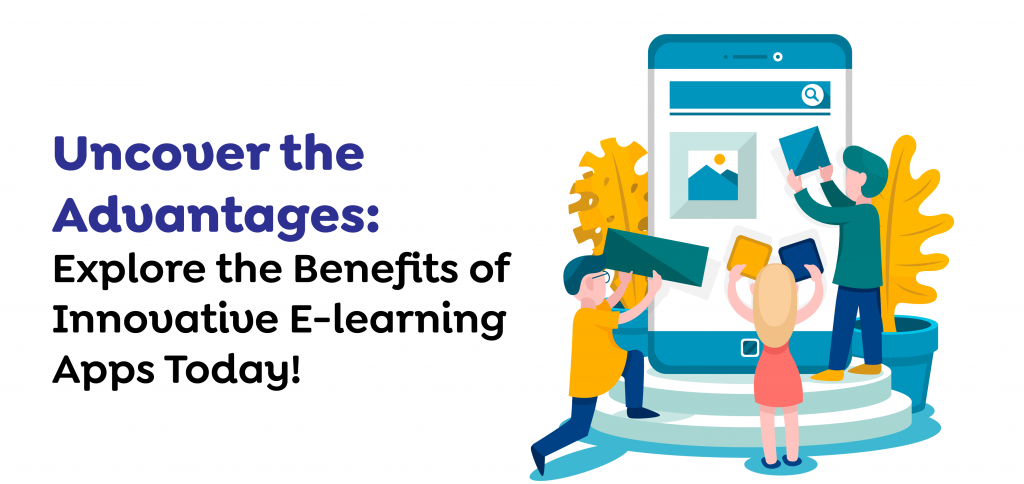
The adoption of e-learning applications has been fueled by many benefits that they deliver to students, educators, and organizations alike:
- Accessibility: e-learning apps improve accessibility in education by enabling learners to research and learn at a time that suits them best. This gives learners a great deal of freedom, eliminating the need to time and place cameras.
- Flexibility: The implementation of e-learning apps is based on the idea that learners have the liberty to choose whether or not they want to study at their own convenience, time, and place. Thus, they can follow other responsibilities like work, family, or travel.
- Personalization: By using adaptive learning algorithms and customized recommendations, e-learning apps can adapt to the peculiarities of every user and offer an individualized learning experience, aiming to provide maximum engagement and effectiveness.
- Interactivity: E-learning mobile app development implements multimedia material, interactive questions, and back-office gamification to create lively and captivating educational experiences that enable learners to stay focused and memorize knowledge.
- Cost-effectiveness: E-learning platforms enable students to avoid physical classrooms, textbooks, and regular learning resources. Hence, they are more economical and offer access to high-quality learning at a lower cost than traditional education.
Moving forward, now let’s explore the diverse array of EdTech apps revolutionizing e-learning!
Types of EdTech Apps Used for E-learning
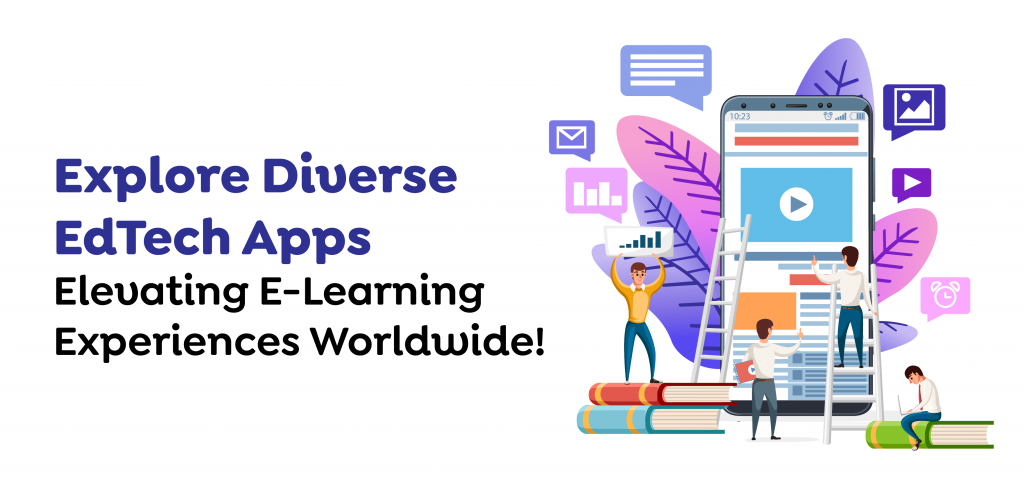
An e-learning app development company in Canada utilizes various technologies, each developed to cater to specific learning purposes and preferences. Some of the most common types of EdTech apps used for e-learning include:
- In-house Tutorial Apps: Such apps offer students an individualized path of learning that goes in line with the subject or skills selected with the aid of a predefined all-inclusive tutorial and reference tools.
- Skill-building Apps: Skill app assistants are interactive tools developed to help users learn new skills or improve the ones they have already acquired while teaching individuals various topics ranging from programming, designing, and language learning to business management.
- Employee-engaging Apps: Software developed by organizations is a competence improvement medium used to facilitate training and development initiatives. Hence, employees are entrusted as they are equipped with new skills and knowledge applicable to their roles and responsibilities.
- Personalized Learning Apps: Immediate interactive learning apps use AI and machine learning algorithms to provide personalized learning that suits each user’s preferences and requirements. Thus, they offer personalized learning paths, learning suggestions based on progress and performance, and feedback to the learner.
- Learning Experience Platform (LXP): LXPs address how training is delivered by providing interactive content such as audiovisual, social tools, and intelligent algorithms so that anyone can collaborate and learn without any time constraints.
After discussing the types, now let’s delve into the essential features that every e-learning application must have.
Must-have Features of E-Learning Applications
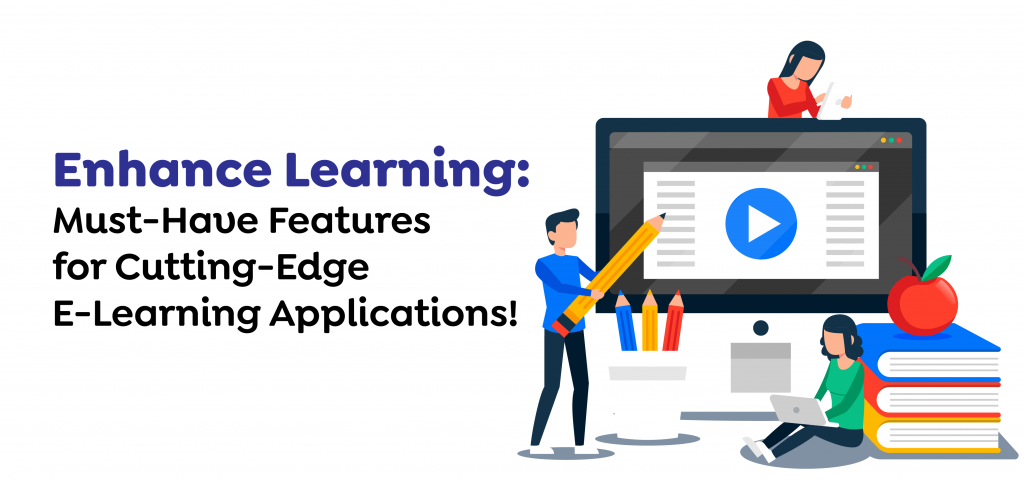
To make a successful e-learning app, including a range of crucial features is essential. These features can be categorized into three main panels:
Student Panel Features:
- Intuitive User Interface:
- Streamlined interface design for effortless navigation and seamless access to educational content.
- Intuitive menu layouts and clear navigation paths to enhance user experience.
- Adaptive Learning Paths:
- Dynamic learning pathways that adjust to individual preferences, education styles, and skill levels.
- AI-driven algorithms that examine user behaviour and performance metrics to tailor education experiences accordingly.
- Immersive Multimedia Content:
- Various media assets, such as high-quality movies, exciting animation, slight exercise routines, and numerous entertainment activities, are used.
- Implementing Virtual reality (VR) and Augmented reality (AR) to reinforce the learning process and memory retention.
- Comprehensive Progress Tracking:
- Sturdy advancement monitoring instruments offer instantaneous input on students’ progress and accomplishments.
- Elaborative analytics panels with graphical depictions of advancement, completion percentages, and skill levels spanning various subjects and themes.
- Collaborative Learning Environment:
- Develop built-in social learning tools for cooperation and peer interactions so that students can engage in peer collaboration, groups, and joint task accomplishment.
- Inclusions such as discussion forums, chat rooms, and stand-alone whiteboards induce knowledge sharing in problem-solving.
- Gamification Elements:
- Learning outcomes will be enhanced thanks to gamification factors, including badges, points and leaderboards, which will compel students to strive to reach their targets.
- Quizzes, prizes, competitions, and game styles are used to make learning more interactive and exciting.
- Personalized Recommendations:
- AI-powered recommendation engines would allow learners to be offered courses, modules, and learning resources that attract them based on their likes, past performances, and preferences.
- Customized learning plans that recommend particular content to help fill learning gaps.
- Accessibility Features:
- Adaptation possibilities, such as screen readers, text-to-speech options, and font-size adjustment, are available for learning-diverse learners and people with different disabilities.
- Multi-lingual support and localization features for the whole universe of learners with differing preferences concerning language might be part of this.
Teacher Panel Features:
- Content Authoring Tools:
- Editorial tools for authors, speakers, and teachers contain a comprehensive toolset for designing, editing and embedding educational content such as lectures, presentations, quizzes, and assignments.
- Support for multimedia display formats, handy text manipulation, and version control that helps shape content creation strategies.
- Communication Channels:
- An integrated communication system for exchanging ideas and providing timely feedback and guidance will be created.
- Integrated messaging systems, forums of discussion, and video conferencing capabilities are being used as effective communication tools for teachers and students.
- Collaboration Features:
- Collaboration tools for co-teaching, sharing resources, and collaborating on lesson plans and curriculum development.
- Shared document repositories, collaborative editing features, and project management tools to streamline collaboration among educators.
- Assessment and Evaluation Tools:
- The software includes valuable assessment tools for forming quizzes, exams, and assessments to measure student competencies.
- Automating marking capability, identifying plagiarism, and developing analytical tools to enhance the effectiveness of the evaluation processes are all ways to humanize education. Humanizing education has the power to empower individuals and promote critical thinking, creativity, collaboration, and self-reflection.
- Analytics and Reporting:
- Data analytics and reporting tools measure student advancement, assess learning data, and rationalize teachers’ effectiveness.
- Graphical reports customized with interactive dashboards, charts, and graphs for tracking overall progress and pinpointing trends to implement evidence-based interventions.
Parent Panel Features:
- Progress Monitoring Dashboard:
- A complete dashboard provides a summary of their child’s academic improvement, including grades, attendance records, completed learning activities, and participation in discussions and assignments.
- Visual representations such as charts, graphs, and progress bars for easy interpretation of performance metrics.
- Communication Channels:
- Reliable communication tools enable seamless teacher interaction, permitting parents to receive updates on their child’s academic journey.
- Elements for scheduling and attending parent-teacher conferences, accessing newsletters, and obtaining notifications about important events or announcements.
- Access to Educational Resources:
- Suitable access to a repository of educational aids, learning materials, and additional content to support their child’s learning journey.
- Curated collections of resources tailored to distinct subjects, topics, or grade levels, ensuring relevance and alignment with curriculum standards.
- Parental Controls:
- Strong parental controls and privacy settings permit parents to control and customize their child’s e-learning venture.
- Tools for implementing content filtering, setting access limitations, and configuring permission settings to ensure a safe and secure learning environment.
- Student Performance Analytics:
- Thorough analytics and understanding of their child’s academic performance allow parents to track improvement over time and identify areas for improvement.
- Comparative analysis against class averages or benchmarks to provide context and perspective on their child’s performance relative to peers.
- Attendance Tracking:
- Real-time monitoring of their child’s attendance allows parents to remain knowledgeable about their child’s attendance patterns and identify potential issues or concerns.
- Automated alerts and push notifications for inconsistent attendance, permitting prompt intervention and follow-up.
- Learning Engagement Metrics:
- Provide insight into their child’s level of engagement and participation in online education activities, including the duration spent on assignments, quizzes, and interactive exercises.
- Metrics such as completion rates, submission deadlines, and frequency of interactions to gauge learning engagement and motivation.
Curious about the expenses involved? Let’s delve into the cost of e-learning app development.
How Much Does It Cost to Develop an E-Learning App?
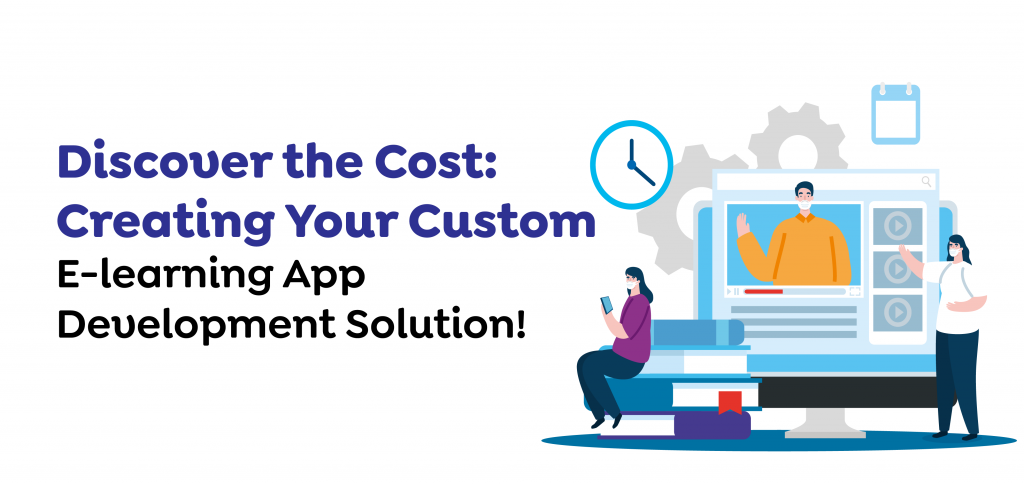
Embarking on the journey of creating an e-learning app involves careful strategizing, particularly when accounting for app development costs. The costs linked with online education app development may vary significantly depending on numerous elements. In this discussion, we will examine diverse facets impacting the expense of manifesting an online education application.
- Feature Complexity: The breadth and depth of features you wish to incorporate into your e-learning app heavily influence development costs. Basic functionalities like user registration and course browsing incur fewer expenses compared to advanced features such as personalized learning paths and social collaboration tools.
- Design Dynamics: Crafting the visual identity of your e-learning app is a critical aspect that impacts overall costs. Opting for customized UI/UX designs tailored to your brand and audience escalates expenses compared to pre-designed templates. Elements like screen count, visual aesthetics, animations, and interactivity also factor into design costs.
- Platform Selection: Your choice of platforms—Android or iOS or both —directly affects development expenses. Developing separate versions for each platform incurs higher costs than opting for cross-platform frameworks like React Native or Flutter. Additionally, ensuring compatibility across various devices and operating system versions adds complexity and may increase budgetary requirements.
- Third-party Integration Investment: Integrating third-party services or APIs, such as payment gateways or analytics tools, introduces additional costs. The complexity and scope of integrations impact expenses, necessitating consideration during budget planning.
- Content Creation and Curation: Content serves as the foundation of any e-learning application. Costs associated with content creation, procuring multimedia assets, and ongoing content maintenance must be accounted for in the budget. Interactive multimedia content typically demands more resources than text-based materials, influencing costs accordingly.
Thus, the cost to develop an e-learning app varies according to the client’s choices or preferences.
Why should you choose us?
When considering your options for e-learning app development, choosing Techugo, a leading e-learning app development company in Canada, is a choice rooted in originality, proficiency, and superiority. With a demonstrated history of providing state-of-the-art solutions customised to fulfill clients’ distinct requirements, Techugo distinguishes itself as a reliable ally in virtual education. Our group of proficient developers, creators, and planners is dedicated to pushing the boundaries of what is feasible in digital learning, harnessing the most recent technologies and optimal methodologies to produce immersive and significant learning encounters. With Techugo, a mobile app development company in Canada alongside you, you can anticipate unparalleled excellence, dependability, and client contentment, rendering us the perfect option for your digital learning application creation necessities.
In A Nutshell!
As the world continues to embrace digital transformation, applications are positioned to transform the methods we acquire, instruct, and gain knowledge. By utilizing the potential of technology, Techugo, our E-Learning app development company in Canada is producing apps that have inventive channels which enable students of every age and origins to reach superior educational material at any time and any place. Whether you’re a student aiming to broaden your perspectives, an instructor endeavouring to enrich teaching efficiency or an institution dedicated to encouraging uninterrupted learning and progression, e-learning applications present infinite opportunities.
So why procrastinate? Embrace the forthcoming education now and commence a perpetual learning journey with state-of-the-art e-learning applications.
Get in touch with us to embark on a journey towards digital transformation and excellence together.
Get In touch
We are excited to here from you and let’s start something special Together. Call Us for any inquiry.
Write us
sales@techugo.caJust a call away
About you

